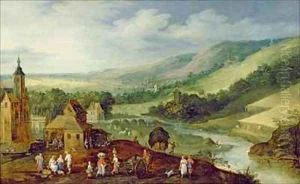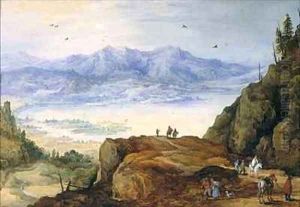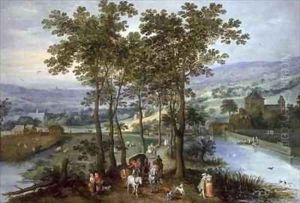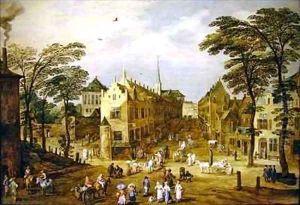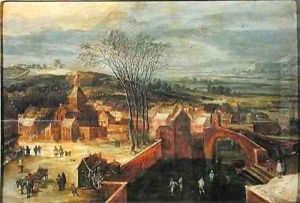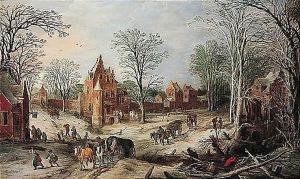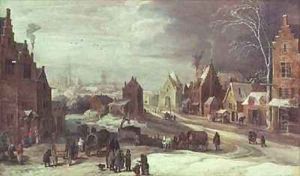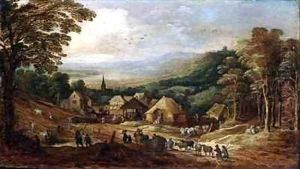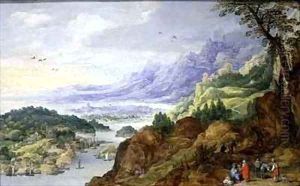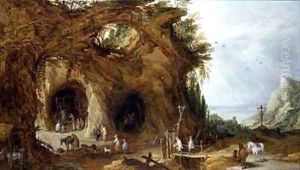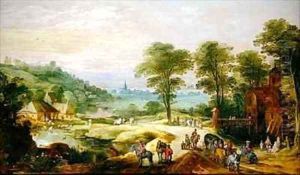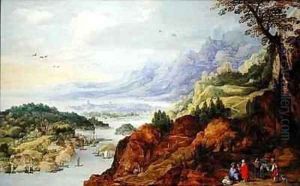J. & Momper, J.de Brueghel Paintings
Jan Brueghel the Elder and Joos de Momper were two prominent Flemish painters whose works and careers overlapped in the late 16th and early 17th centuries, during the Northern Renaissance. While they collaborated on several works, they are individually known for their unique contributions to the art world.
Jan Brueghel the Elder was born in 1568 in Brussels, part of the Habsburg Netherlands. He was the son of Pieter Bruegel the Elder, a significant figure in Renaissance art. Unlike his father, Jan is best known for his detailed landscapes and still life paintings. His works are distinguished by their meticulous attention to detail and vibrant use of color. Jan Brueghel the Elder was a versatile artist, also excelling in genres such as flower still lifes, allegorical scenes, and seascapes. He often collaborated with other artists, including Peter Paul Rubens, with whom he created several works that combined Rubens' figures with Brueghel's landscapes. Jan's contribution to art history is significant, as he played a crucial role in the development of landscape and flower painting in the early 17th century.
Joos de Momper the Younger was born in Antwerp in 1564, into a family of artists. He is especially noted for his expansive landscapes that often incorporate fantastical elements. De Momper's style bridges the gap between the late Mannerist and early Baroque artistic periods, and his works are characterized by bold compositions and a dramatic use of color. His landscapes typically feature a strong contrast between the fore- and background, with the latter often rendered in cooler tones to enhance the sense of depth. Although less known than Brueghel, de Momper was a prolific artist whose works provide a valuable insight into the transition of landscape painting during his lifetime.
Their collaborations are notable for the seamless integration of their styles, with Brueghel's detailed figures and objects often set within de Momper's sweeping landscapes. These works not only highlight the artists' mastery of their respective domains but also reflect the collaborative spirit of the time, where artists would often work together to create pieces that were greater than the sum of their parts.
Both artists died in their hometowns, Jan Brueghel the Elder in Antwerp in 1625 and Joos de Momper in Antwerp in 1635. Their legacy is carried on through their influence on subsequent generations of artists and their lasting contributions to the Flemish Renaissance.
